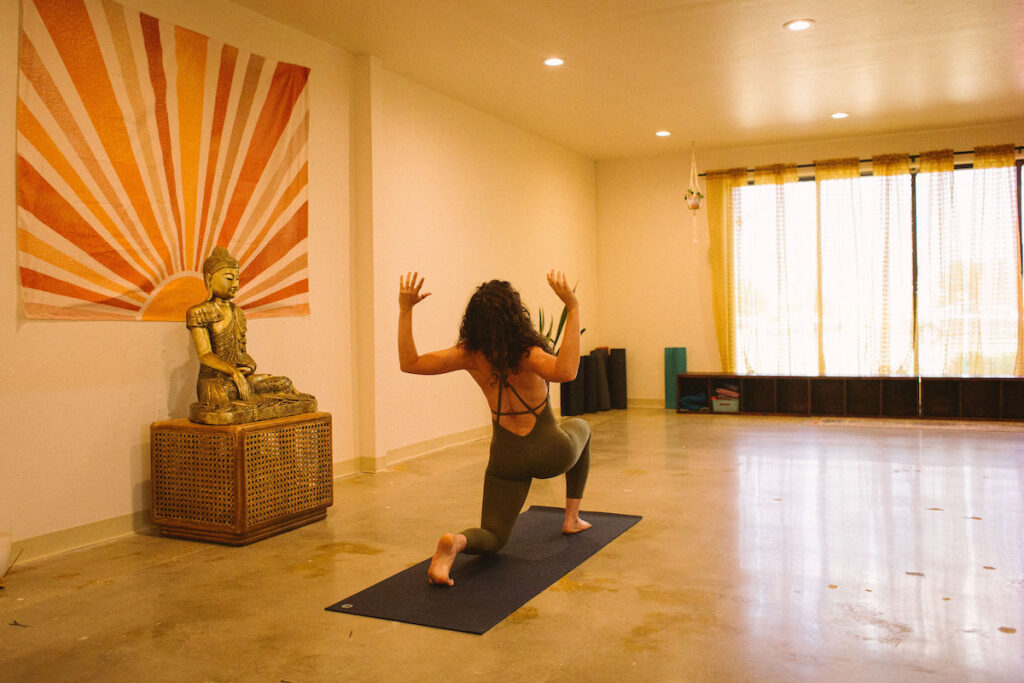In the ever-evolving world of Yoga, two movement styles have emerged—each offering its own unique blend of physical and mental benefits. These styles, known as Primal Vinyasa Flow and Vinyasa Flow, have gained considerable attention in recent years. While they share some similarities, they also have distinct differences that cater to diverse preferences and goals.
In this article, we dive into the key distinctions between them, including their philosophies, movements, and benefits.
Vinyasa Yoga
Vinyasa Yoga is an established and widely practiced style of Yoga. It is characterized by a structured sequence of poses linked together with breath, creating a continuous and flowing movement. Vinyasa Yoga has its roots in Hatha Yoga and often incorporates elements of Ashtanga Yoga, emphasizing the synchronization of breath and movement.
1. Philosophy:
Vinyasa Yoga places a strong emphasis on the connection between breath and movement. The philosophy centers around the idea that this synchronization not only enhances the physical practice, but also cultivates mindfulness and a sense of moving meditation.
2. Movement:
In Vinyasa Yoga, practitioners move through a sequence of poses, or asanas, in a dynamic and flowing manner. The transitions between poses are guided by the breath, creating a seamless and rhythmic practice. While there is room for variation within the sequence, the overall structure remains relatively consistent.
3. Benefits:
Vinyasa Yoga offers a multitude of physical and mental benefits. It enhances strength, flexibility, and cardiovascular fitness. The deep, controlled breathwork fosters a sense of calm and focus, reducing stress and anxiety. It is also known to enhance energy levels and even activate the lymphatic system, helping boost immunity.
Primal Vinyasa Flow
Primal Vinyasa Flow, often simply referred to as Primal Vinyasa, is a relatively new approach to movement and Yoga that draws inspiration from various disciplines, including Yoga, martial arts, dance, and functional fitness. This innovative practice is rooted in the belief that the body’s natural movements should be explored and celebrated. Unlike traditional Yoga styles, Primal Vinyasa Flow prioritizes adaptability and improvisation.
1. Philosophy:
One of the defining features of Primal Vinyasa Flow is its philosophy. It encourages practitioners to reconnect with their innate, primal movement patterns. This means embracing a more intuitive and explorative approach to physical expression. It emphasizes that there are no wrong movements; instead, it encourages individuals to move in ways that feel natural and enjoyable.
2. Movement:
Primal Vinyasa Flow incorporates a wide range of movements, from crawling and rolling to squatting and jumping. It’s characterized by its fluidity and diversity, allowing for a creative exploration of different planes of motion. Practitioners often engage in playful and animal-inspired movements, embracing their inner child and tapping into their ancestral movement patterns.
3. Benefits:
The benefits of Primal Vinyasa Flow extend beyond physical fitness. By encouraging spontaneous and varied movements, it enhances flexibility, strength, and mobility. Additionally, it promotes body awareness and mindfulness, as practitioners become attuned to the sensations and limitations of their bodies. This heightened awareness can lead to improved posture, reduced risk of injury, and a greater sense of overall well-being.
Preferences and Goals Should Lead the Decision
In the world of yoga and movement, both Primal Vinyasa Flow and Vinyasa Yoga offer valuable approaches to enhancing physical health and well-being. The choice between these two styles ultimately depends on personal preferences and goals. Some may find the creativity and spontaneity of Primal Vinyasa Flow to be liberating, while others may gravitate toward a more traditional discipline.
Ultimately, both practices provide opportunities for growth, self-discovery, and a deeper connection between mind and body. Here at The Yoga Box, we have combined both styles to create a new and unique style of yoga. Visit our class schedules to learn more and then contact us to schedule a complimentary tour today.








